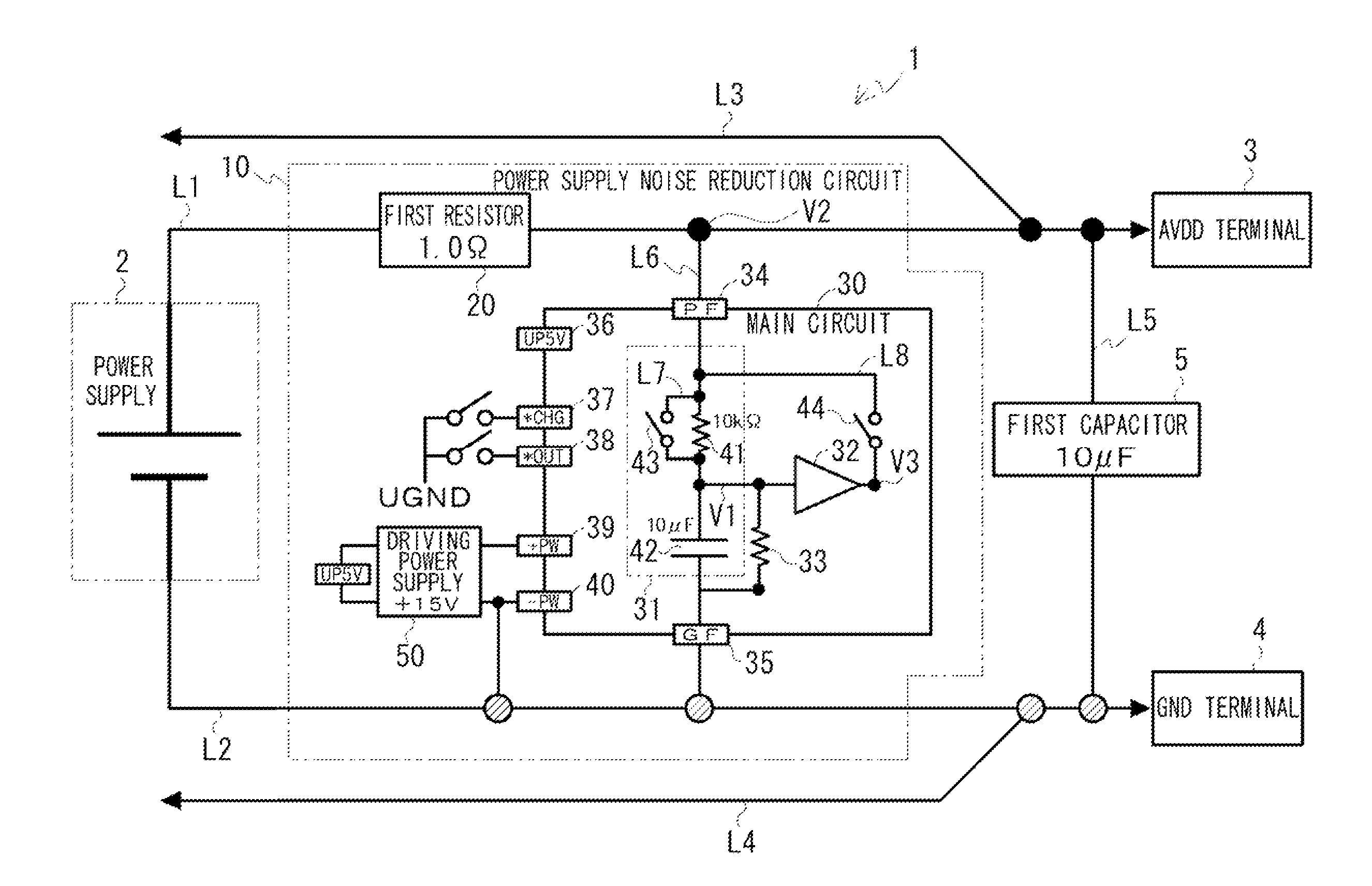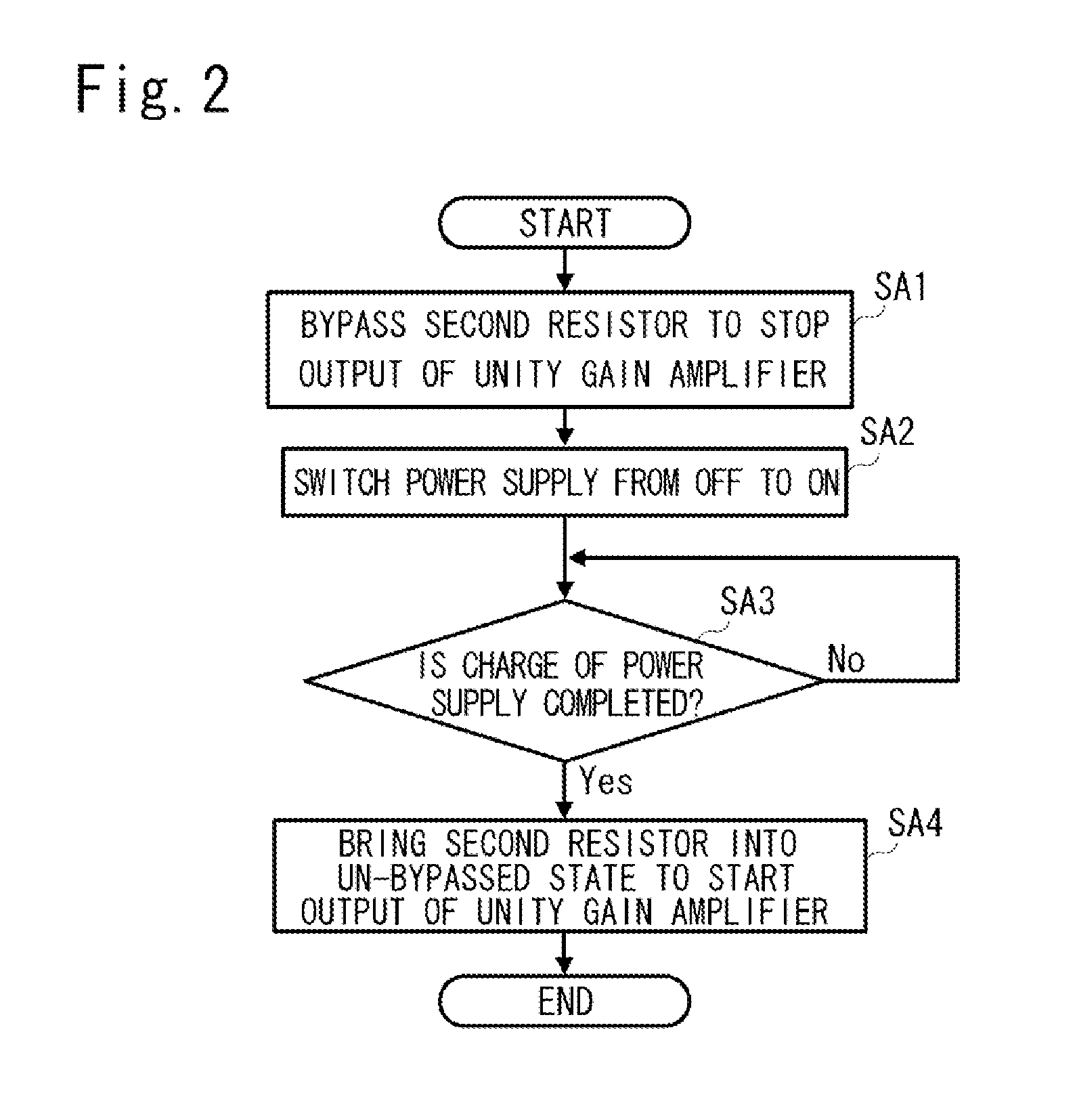Power supply noise reduction circuit and power supply noise reduction method
a technology of power supply and noise reduction circuit, which is applied in the direction of gas-filled discharge tubes, solid cathodes, and efficient power electronics conversion, can solve the problems of difficult accurate testing, and achieve the effects of reducing noise, increasing testing time, and increasing the size of part shapes
- Summary
- Abstract
- Description
- Claims
- Application Information
AI Technical Summary
Benefits of technology
Problems solved by technology
Method used
Image
Examples
Embodiment Construction
[0029]An embodiment of the present invention is explained below in detail with reference to the accompanying drawings First, the basic concept of the embodiment is explained as [I], then specific contents of the embodiment are explained as [II], and lastly a modification of the embodiment is explained as [III]. The present invention is not limited to the embodiment.
[I] Basic Concept of the Embodiment
[0030]The basic concept of the present embodiment is explained first. A power supply noise reduction circuit and a power supply noise reduction method according to the present embodiment are for reducing noise included in a constant voltage output that is output from a power supply to a load. The power supply noise reduction circuit includes one that is configured independently from various devices and circuits such as a constant-voltage power supply device, and one that is incorporated in these devices and circuits. The latter corresponds to, for example, a case in which the power suppl...
PUM
 Login to View More
Login to View More Abstract
Description
Claims
Application Information
 Login to View More
Login to View More - R&D
- Intellectual Property
- Life Sciences
- Materials
- Tech Scout
- Unparalleled Data Quality
- Higher Quality Content
- 60% Fewer Hallucinations
Browse by: Latest US Patents, China's latest patents, Technical Efficacy Thesaurus, Application Domain, Technology Topic, Popular Technical Reports.
© 2025 PatSnap. All rights reserved.Legal|Privacy policy|Modern Slavery Act Transparency Statement|Sitemap|About US| Contact US: help@patsnap.com



